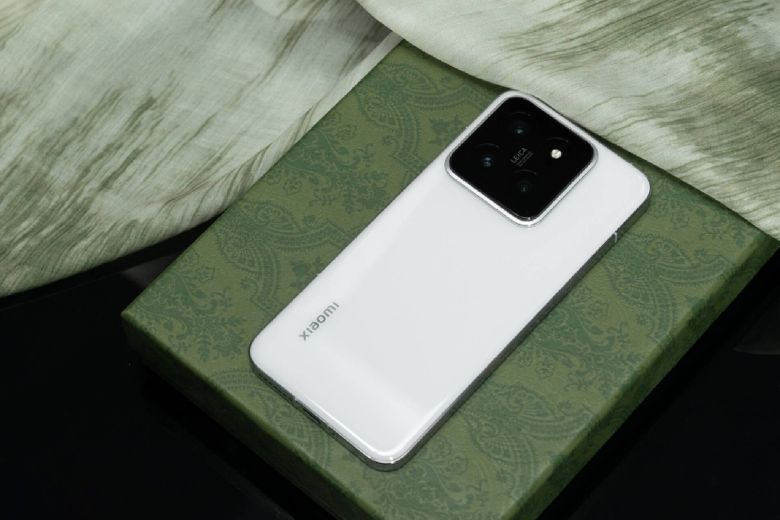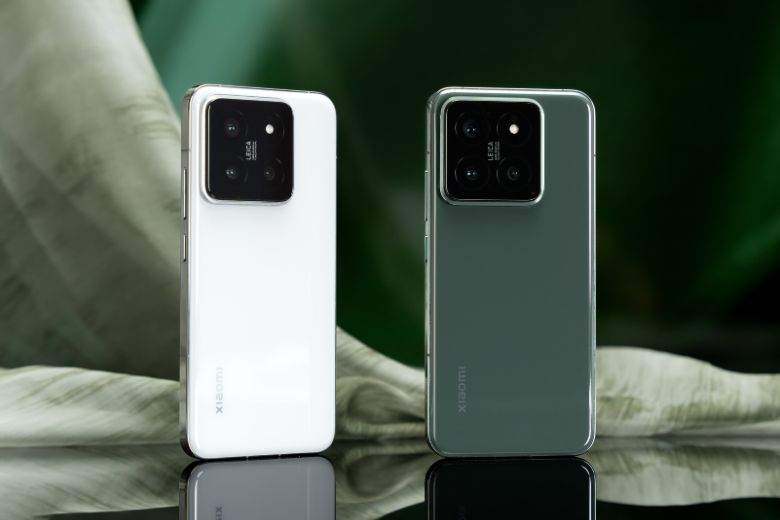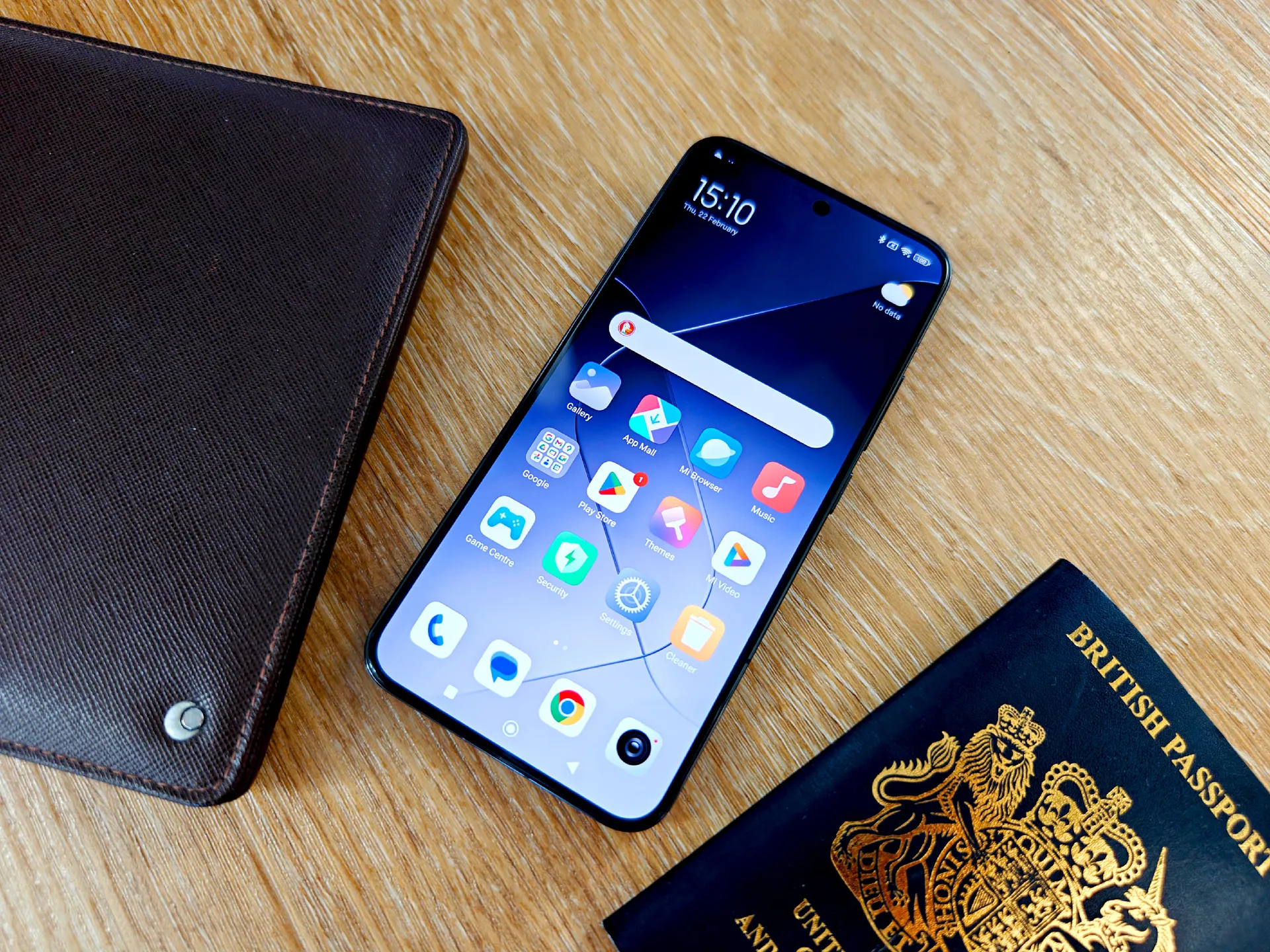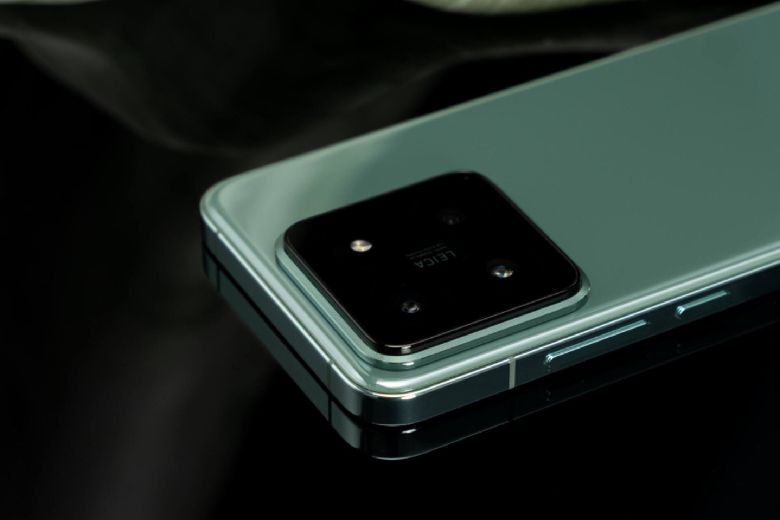Xiaomi 14, unveiled in late October, stands as the latest flagship offering from Xiaomi. Positioned as an upgrade from its predecessor, this product boasts numerous enhancements across its display, performance, and camera capabilities. Over the past two weeks, I’ve had the opportunity to immerse myself in the Xiaomi 14, treating it as my primary device. Priced at around 15 million VND, it emerges as one of the most compelling choices in its segment, representing a comprehensive upgrade from the Xiaomi 13.
Impressive Heat Management
In terms of performance, the Xiaomi 14 proudly holds the title of being the first phone in the world equipped with the Snapdragon 8 Gen 3 chip. Furthermore, the internal storage has been expanded to 256GB, a substantial improvement from the 128GB offered by its predecessor. At present, discerning the performance difference between Snapdragon 8 Gen 2 and Snapdragon 8 Gen 3 proves challenging for users. My personal Xiaomi 13 Pro has consistently delivered outstanding performance in everyday tasks. However, a notable downside has been the device’s temperature management.

Throughout regular usage, the Xiaomi 14 effectively optimizes its temperature. Rarely did I encounter heat issues, only during prolonged 4K video recording and 3DMark Stress Test. Nevertheless, these are infrequent tasks that do not accurately reflect the phone’s overall performance.
The Snapdragon 8 Gen 3 delivers smooth performance across all daily tasks, including demanding games like Genshin Impact. Xiaomi 14 remains responsive without experiencing significant FPS drops seen in previous generations.
HyperOS: Incredibly Smooth Yet Not Without Flaws
In addition to performance and temperature, software is a significant asset for the Xiaomi 14. Despite some drawbacks in the native ROM such as delayed notifications and bloatware, HyperOS stands out as the best, most stable operating system on Xiaomi phones.
Firstly, HyperOS is remarkably smooth. To illustrate, if HyperOS earns a perfect 10, the MIUI 14 on my Xiaomi 13 Pro would only score around 7. Although the native MIUI has significantly improved in terms of smoothness and responsiveness, the gap is substantial when compared to HyperOS on the Xiaomi 14.

With 8GB of physical RAM paired with an additional 6GB of virtual RAM, the Xiaomi 14 handles daily tasks effortlessly, from social media browsing to watching YouTube videos.
Secondly, the HyperOS interface is more intuitive and streamlined compared to MIUI. Key areas like the status bar, Settings, Phone, and Messages are redesigned for better visibility and ease of use.
However, HyperOS is not without its glitches. Previously mentioned issues like latency when switching to Always-on Display or inconsistent automatic brightness persist. Notably, after upgrading to HyperOS 1.0.19.0, my Xiaomi 14 immediately froze and became unusable, even after rebooting in Safe Mode.
download interesting ringtone at: ringtonesonic.com
Impressive Battery Life
As a compact flagship, Xiaomi is generous with a 4,610mAh battery on the Xiaomi 14. For comparison, other high-end models like iPhone 15 or Galaxy S23 feature batteries under 4,000mAh.
In practical use, the Xiaomi 14 easily lasts a full day. With light tasks such as watching YouTube or basic messaging, the device achieves over 8 hours of usage. When combining social media, gaming, and 4G connectivity, the Xiaomi 14 still delivers around 6 hours in the afternoon and over 6 hours in the morning with the screen on. This result is comparable to iPhone 15 and significantly exceeds Galaxy S23.
Xiaomi 14’s charging power has been upgraded from 67W to 90W, a notable advantage over Samsung and Apple flagships in the same price range. Fast charging greatly enhances productivity, though using a proprietary charger can be inconvenient when on the go, requiring multiple chargers for different devices.
World’s Brightest Display
The most impressive feature of the Xiaomi 14 is its display brightness of 3,000 nits, making it the brightest phone globally, surpassing competitors like OPPO Find X6 Pro (2,500 nits), iPhone 15 (2,000 nits), and Galaxy S23 (1,750 nits). But how does this translate to real-world usage?

Indoors, I comfortably use the Xiaomi 14 with brightness set at 50-60%. When adjusting the brightness to the maximum, it matches the brightness of iPhone 15 or Xiaomi 13 Pro.
However, outdoor usage reveals a slight issue with brightness. Moving from shade to sunlight, the brightness remains consistent instead of peaking as expected. Only when facing the screen directly into the sunlight does the Xiaomi 14 reach the full 3,000 nits.
Even at 3,000 nits, the difference between Xiaomi 14 and other flagship models is not stark. Compared to Xiaomi 13 Pro or iPhone 15, the Xiaomi 14’s screen is only 15-20% brighter. While there is a difference, it is not overly significant. Overall, all three screens perform well under sunlight or intense lighting conditions.
Apart from brightness, the display quality on the Xiaomi 14 excels in detail, contrast, viewing angles, and color reproduction. Despite being an imported device, it supports Widevine L1 to stream high-quality content on platforms like Netflix. In reality, flagship displays have reached a saturation point, and brightness remains the major area for improvement in the future.
Compact and Elegant Design
The Xiaomi 14’s compact design has always been user-friendly. It can be comfortably held and operated with one hand. The device’s finish is excellent, with a neatly tapered frame that leaves minimal unnecessary details. The phone also boasts water resistance comparable to Galaxy S23 or iPhone 15.
The only drawback in the Xiaomi 14 design is the oversized camera module. The camera setup extends two-thirds across the back, creating inconvenience when placing the device on flat surfaces without a case.
Competent Camera System
Xiaomi’s flagship cameras have witnessed remarkable improvement since the 13 series, and the trend continues with the Xiaomi 14.

The standout feature in the camera setup is its low-light performance. Thanks to the new sensor, the Xiaomi 14 handles low-light conditions exceptionally well: details are preserved, dark areas are adequately brightened, and there is minimal overexposure of lights or signs.
In well-lit conditions, the Xiaomi 14 excels in capturing ample light and rich details. The algorithm, while still leaning towards vivid colors, has reduced intervention compared to the Xiaomi 13 series.
Conclusion
The Xiaomi 14 stands as a worthy successor to the Xiaomi 13, offering substantial upgrades across performance, display, battery life, and camera capabilities. While there are some minor drawbacks, such as HyperOS glitches and a slightly oversized camera module, the overall package makes the Xiaomi 14 a compelling choice in the flagship smartphone market. With its competitive pricing and impressive feature set, the Xiaomi 14 secures its position as one of the top contenders in its segment.
The article is referenced from the source: Xiaomi 14 review: Better than Galaxy S24?









